A few weeks ago I overdid things for my fingers on an overhang with crimps and ended up tearing a ligament in my right ring finger. So I was banned from any climbs with crimps or pinches on my right hand for a while (which is a lot of climbs, too be honest). Although I'm starting to be able to use the hand fully again, I think I'll be having to tape it for some time to come, as I still can't straighten it fully and it's still looking bigger than it ought to be.
I guess it has at least pushed me to work on my nemesis a bit more, the dreaded sloper! If you're wondering what on earth I'm on about at this point, then it seems to be a good time to talk about technical climbing terms a bit. Hopefully I don't bore you to sleep, unless that's just what you need right now.
Talking of crimps and overhangs, this is one I got banned from after the injury:
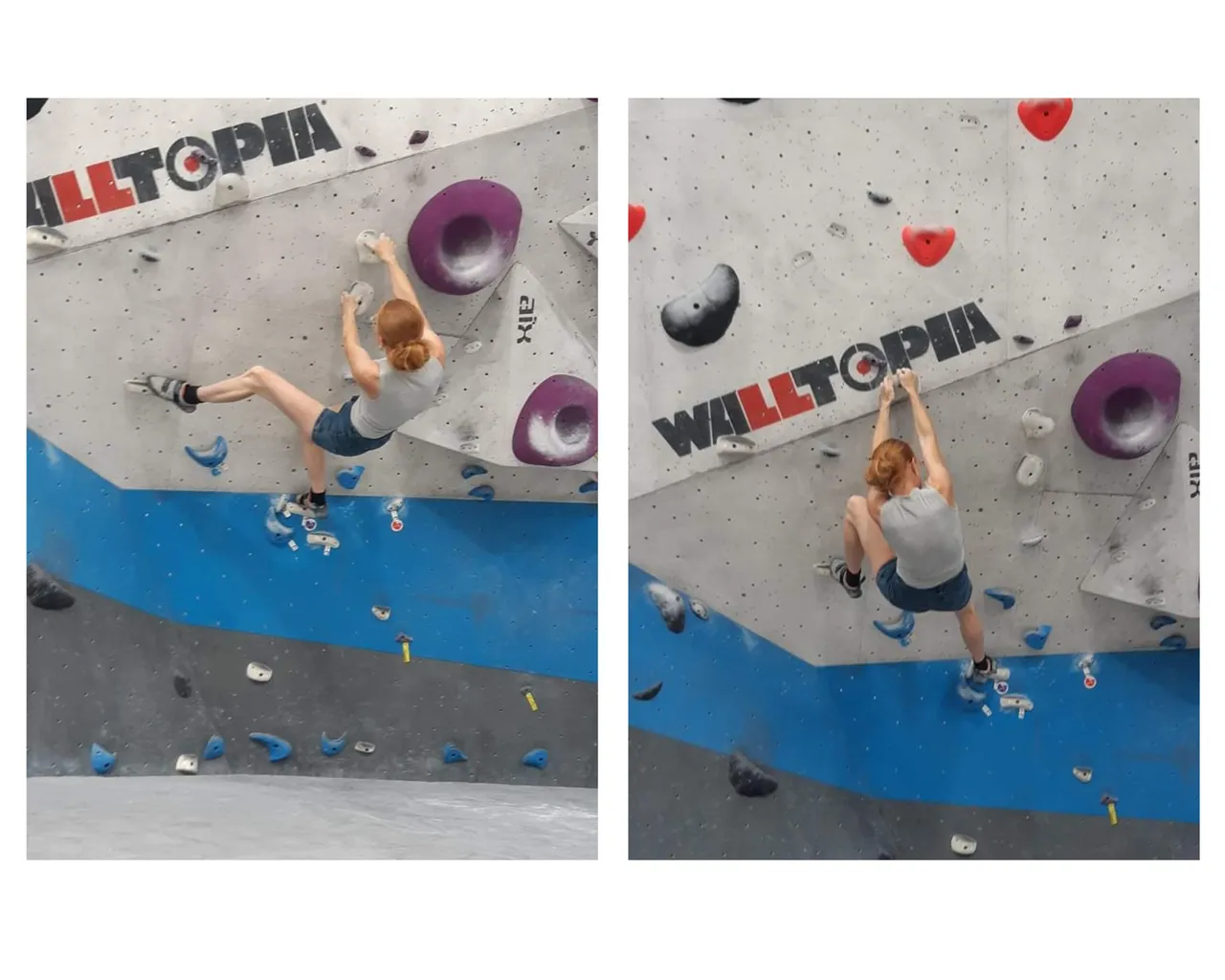
In the photos above, these are some mini jugs I'm holding, so not a big issue, however, the majority of the climb was crimps, as you can see in this next (sorry, slightly blurry) photo.
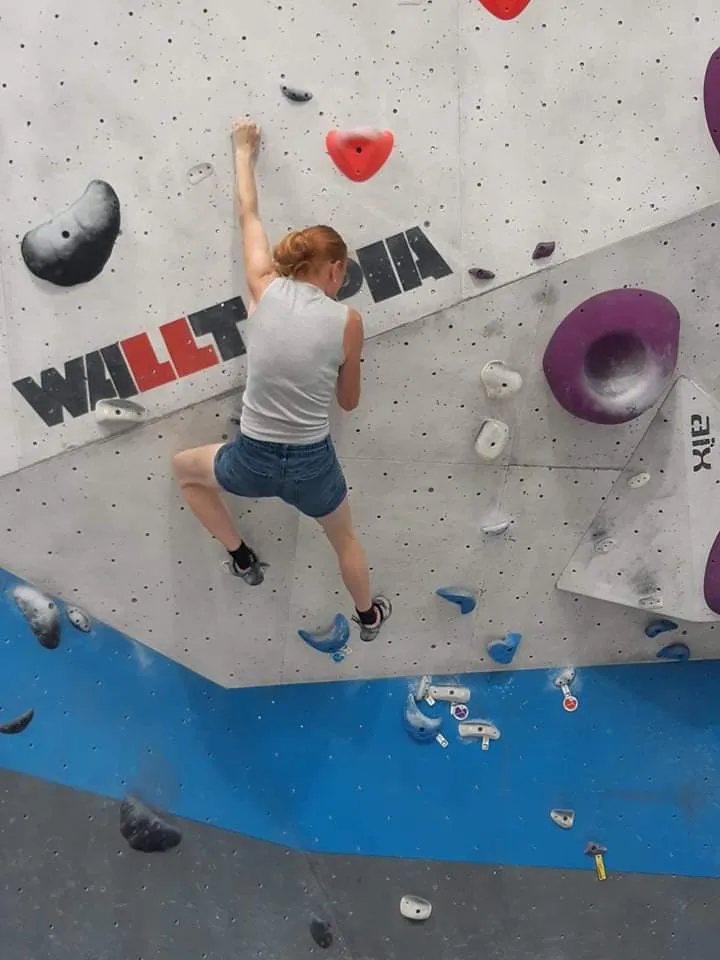
Or maybe you can't see, because it's a small crimp and is covered by my hand. This wasn't the climb I injured myself on, that was even more crimpy and overhung all the way up. "Crimp" basically means a hold you can only get your fingertips onto and "overhang" means a wall that leans towards you, so that your body weight is always falling away from the wall as you climb.
The following is an example of an overhang I could work on without doing further damage to my finger:
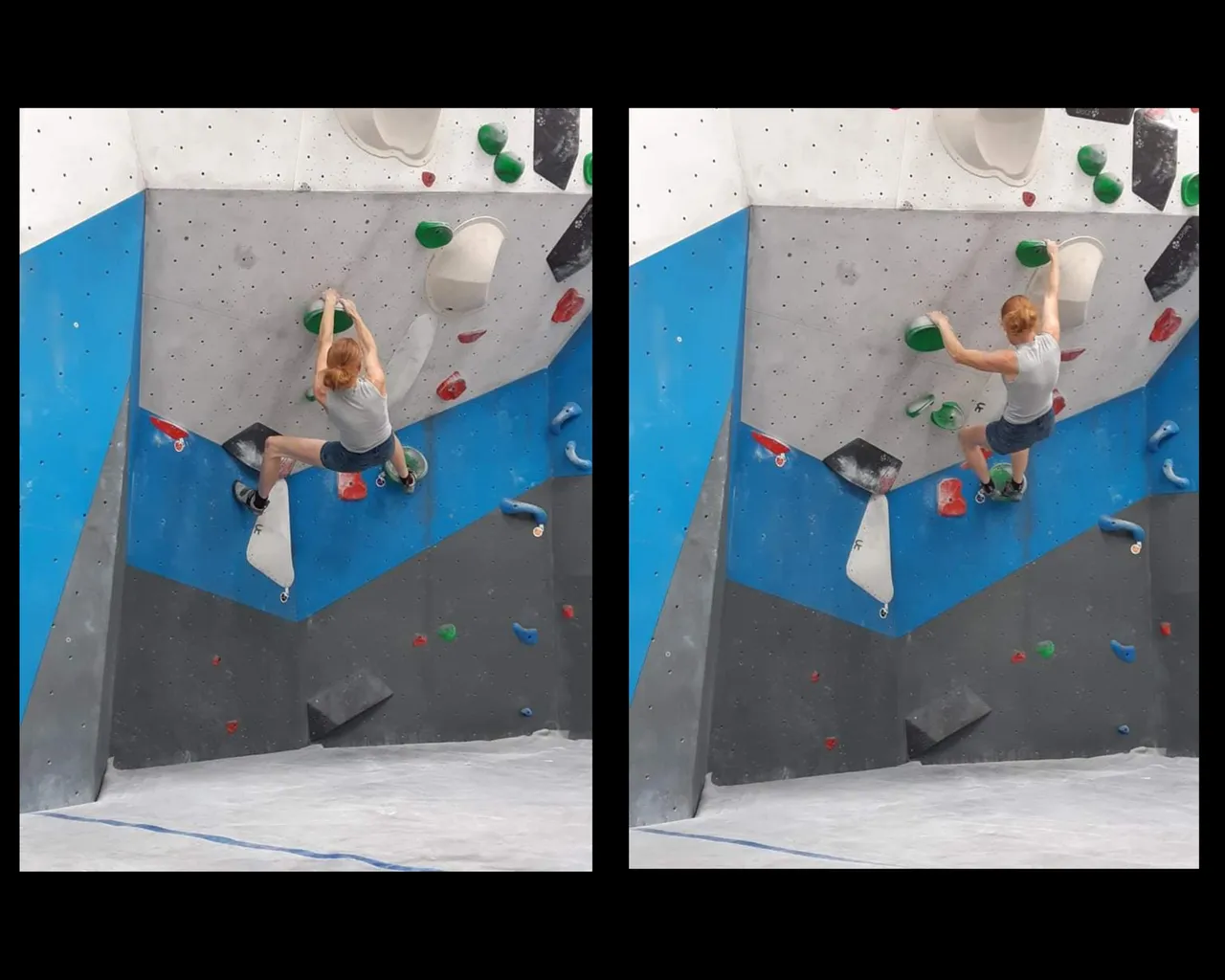

While these look like nice large holds, they are actually a mixture of jugs and slopers, which made it one of my less favourite climbs, but also a climb I needed to practise more. It includes a section where I need to lunge for a hold, the one in the second photo. Lunges and dynos (short for "dynamic move" where all limbs leave the wall in a jump) are my weak points too and it didn't help that I was lunging for it with my injured hand, which made me more nervous. If you look at how my hands are placed on the hold in the first image, they are just cupping the hold and almost flat. This is the mark of a "sloper" where you can't get a fist like grip on the hold. It's not the worst sloper, so it's good a practice hold to start giving you a feel for using that type of hold. The ball shaped ones in the next photo are a little better, as they allow a little more curve for the hand, so they are also good starters for the sloper style of hold.
A similar level climb with more obvious slopers, was on a slab wall. So while it was scarier in a way, it was also easier on the arms. A "slab" is a wall which slopes slightly away from you. It allows you to put more of your weight through your feet, rather than having to use your arms constantly.
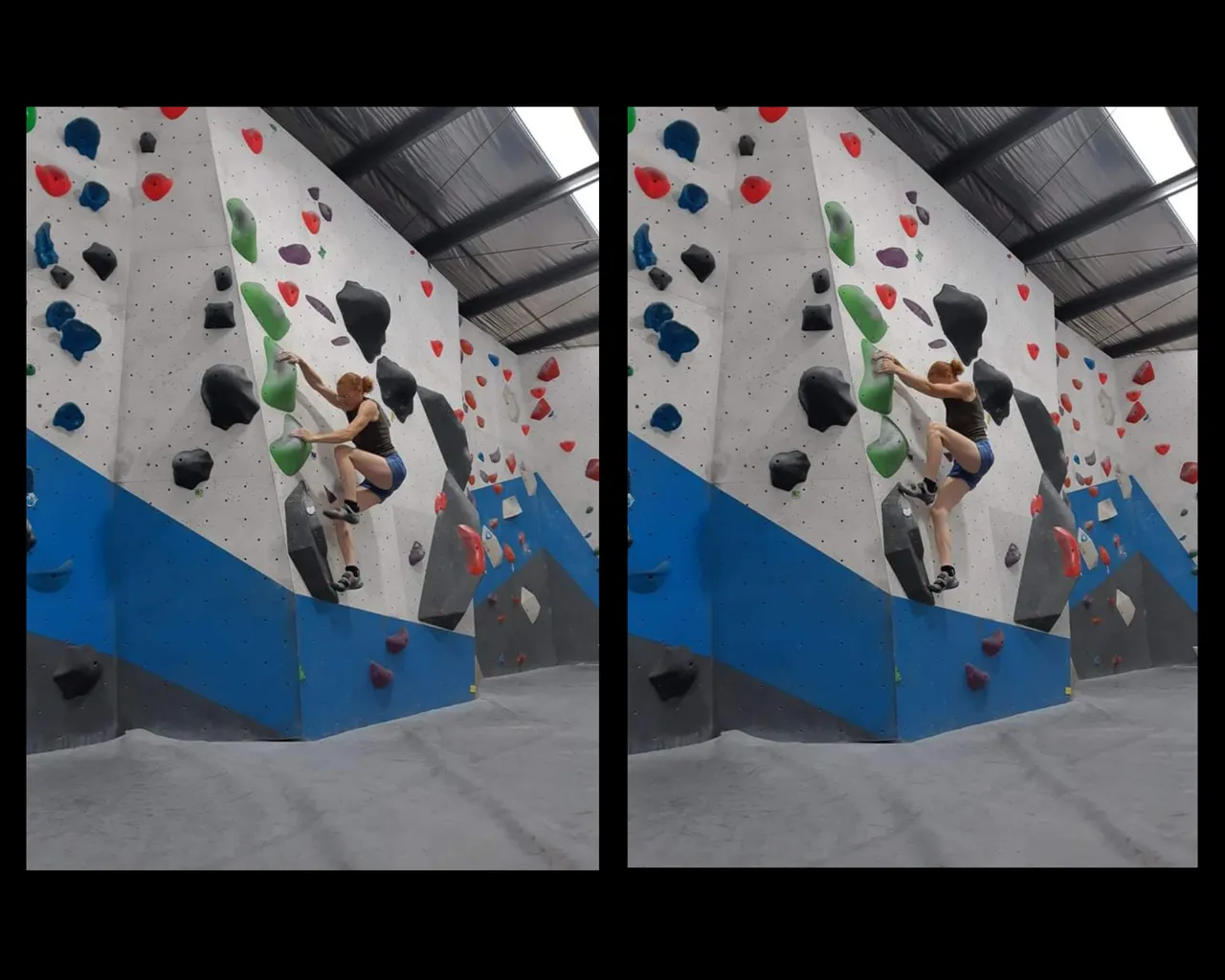
The trick with slopers is to keep your weight under them. In this case, the slopers were on their sides, so the trick was then to push your weight away from them using your feet. The moment you stop pushing, your weight swings away from the wall in what is called "barndooring", because it's like a door swinging open on its own weight.
Then came an interesting part, because the next hold faced the opposite way to the rest. Some people tackled it by swapping their weight direction, but they then had to swap back for the next hold, which I didn't really have the strength to do. So my approach was to lean my weight into it from the side I was on:
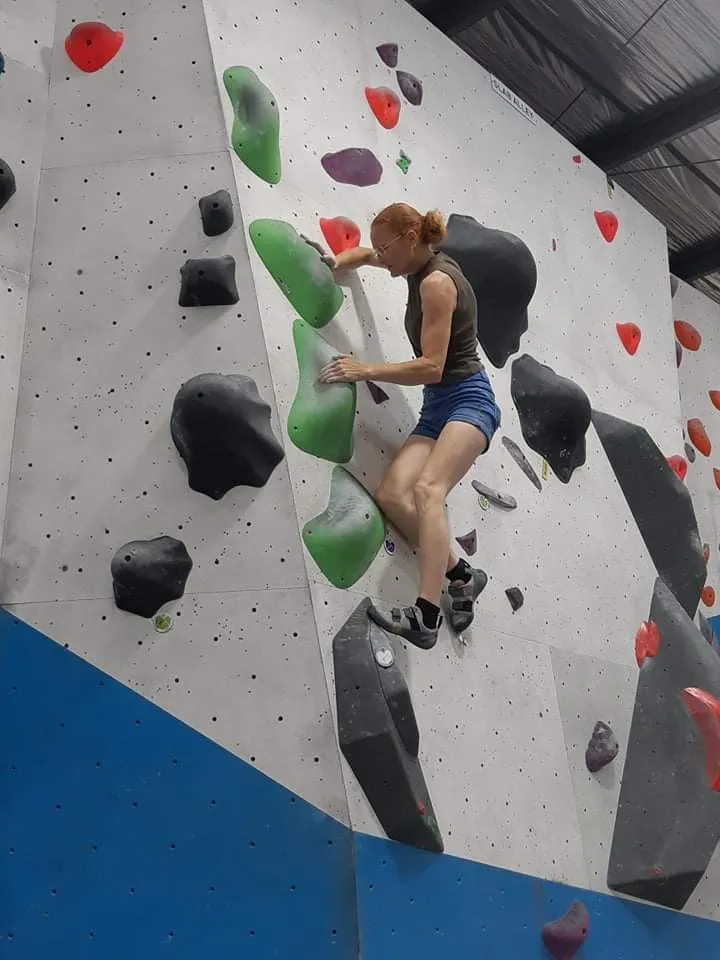
From there I could reach up with my other hand to catch the next hold:
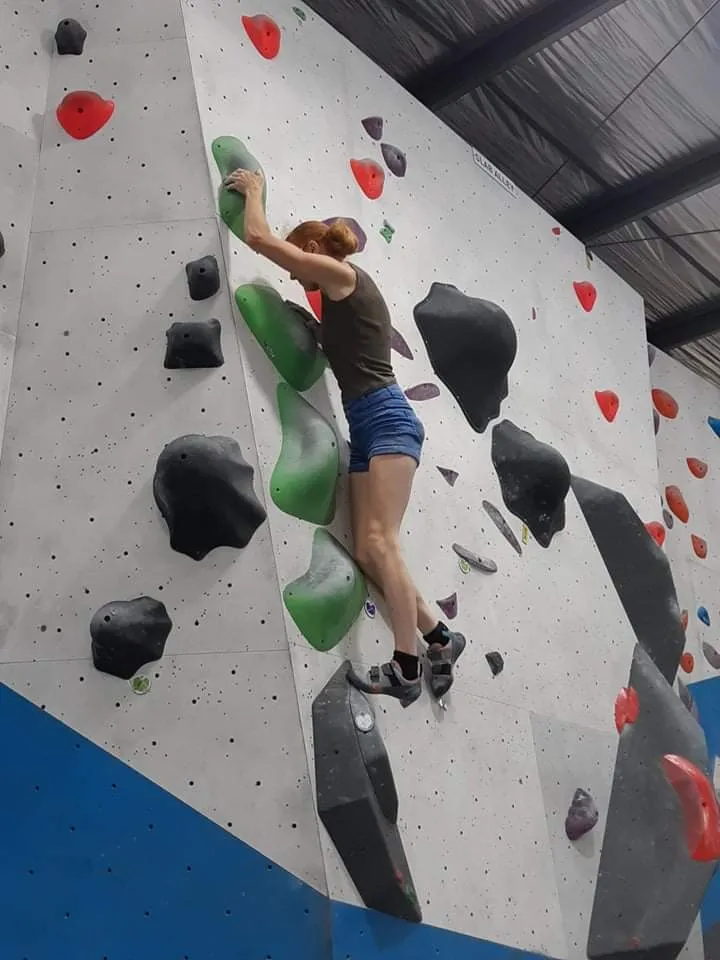
Then I'd need to keep the pressure on pushing away from that reverse facing hold with my right hand while I got my feet back up to do their work again.
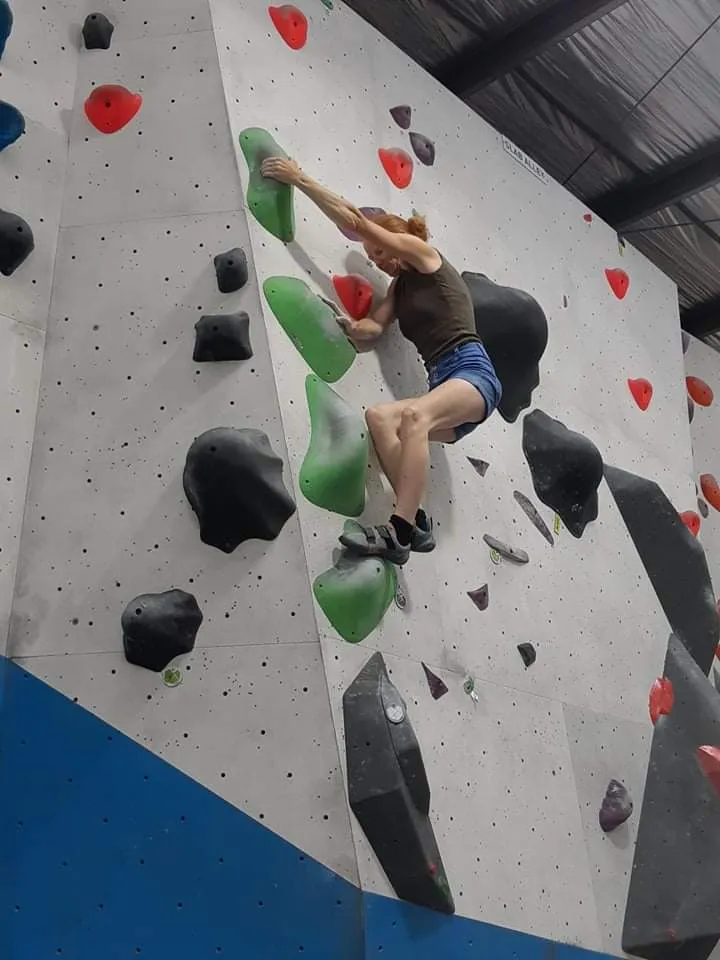
Once my feet were up I could then reach over to the crimp on the right (don't worry, I could use uninjured fingers for that one) then pull in on that and the sloper at the same time to keep my weight centred as I worked my feet up.
Once standing the slope of the wall meant you could balance to touch the tiny, almost symbolic, finish hold with both hands to complete the climb.
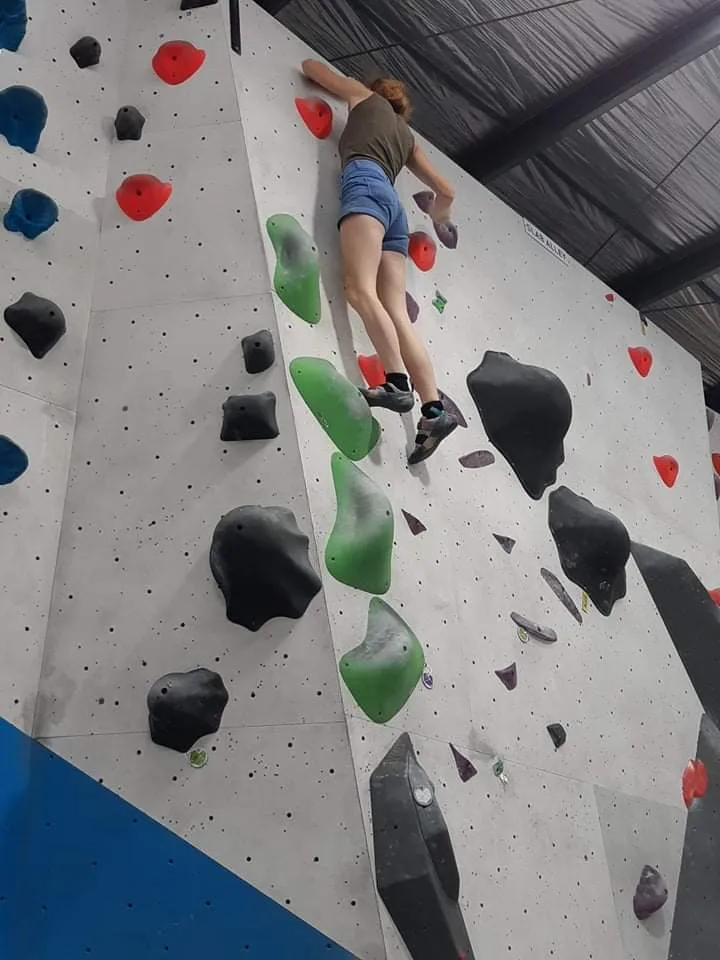
Due to my physical strength not being particularly great, I tend to use as much technique as I can to get me up a climb. Keeping as close to the wall as possible is the first advice for anyone, but sometimes you need a bit of technique to help you do so. Barndooring is not an uncommon occurrence when you start to get holds that aren't placed fully horizontal. Sometimes you can counter the swing purely with arm strength, but sometimes you need a little more technique to keep your body into the wall. These techniques come in handy on overhangs as well. At some point you'll likely come across terms in climbing like "heel hook", "toe hook" "hand jam" or "knee bar". These are all descriptions of using a particular body part to help hold you in place and how they do it is in the description of the technique. The ones I most commonly use are toe and heel hooks. The following climb demonstrates the use of a heel hook to keep me into the wall as I lunge for not so great holds on a slight overhang.

From this position near the start, the next three holds require a bit of a lunge to keep you into the wall. On a vertical wall you could probably do them statically, but with any overhang your weight is always coming away from the wall, so you need to pull in and go quickly.
Once I caught the first lunge, I could have lunged again for the left hold, but by hooking my heel in early it kept me in and centred enough so that I could reach for it almost statically.
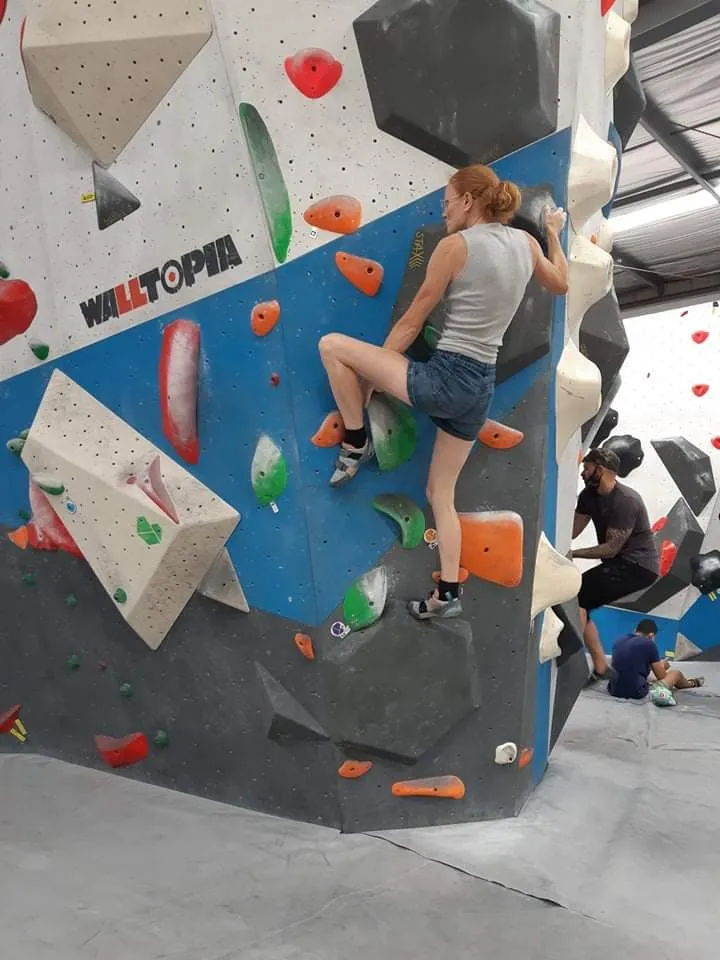
Then the next hold was a horrible little round lump on top of the volume, so I needed all the help I could get lunging for that.
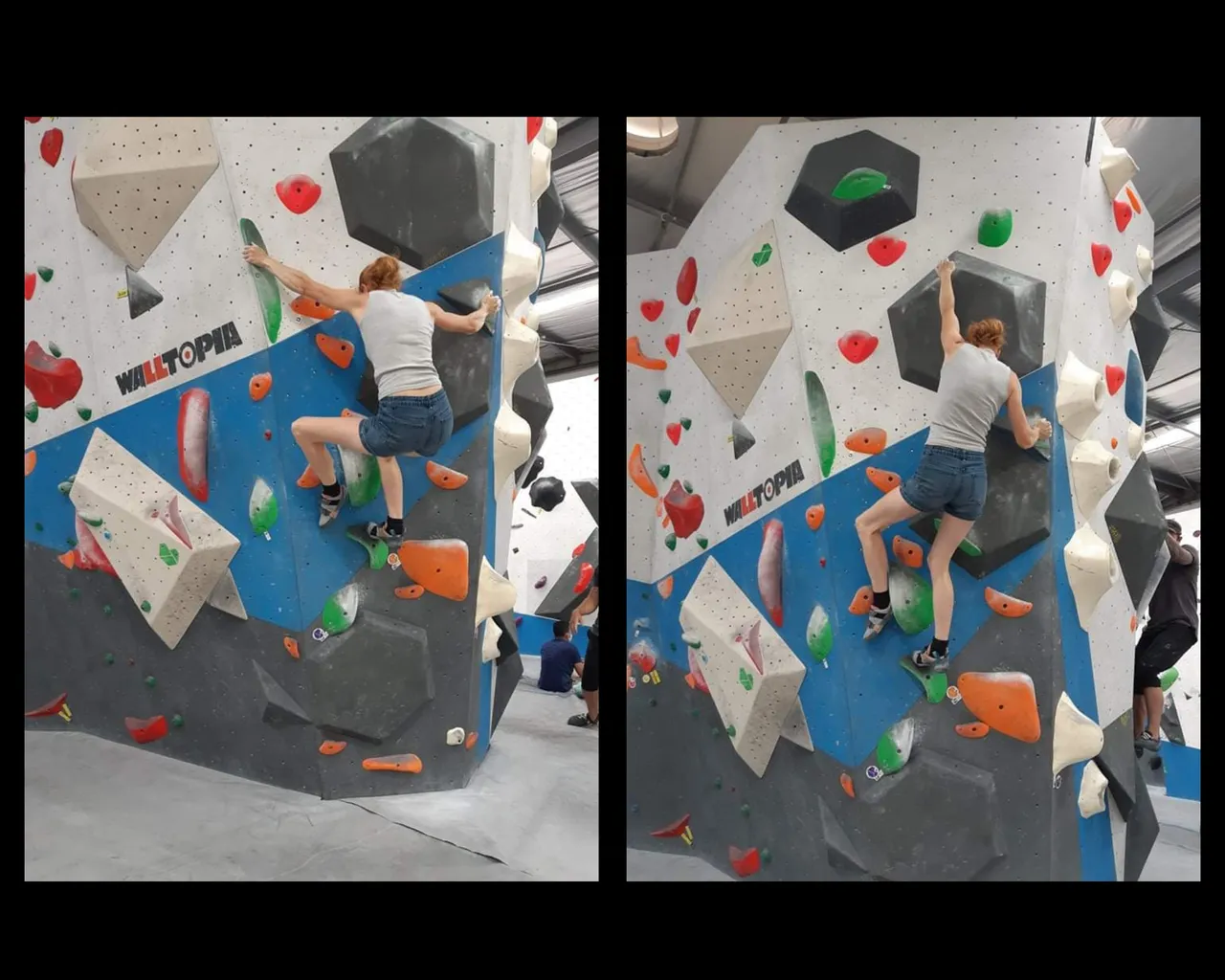
It's not the most graceful looking position, but that's not something you're worrying about when you're trying not to fall off a wall. From that point on it was plain sailing, with jugs to the finish. Just unhook the heel and bring the feet up higher.
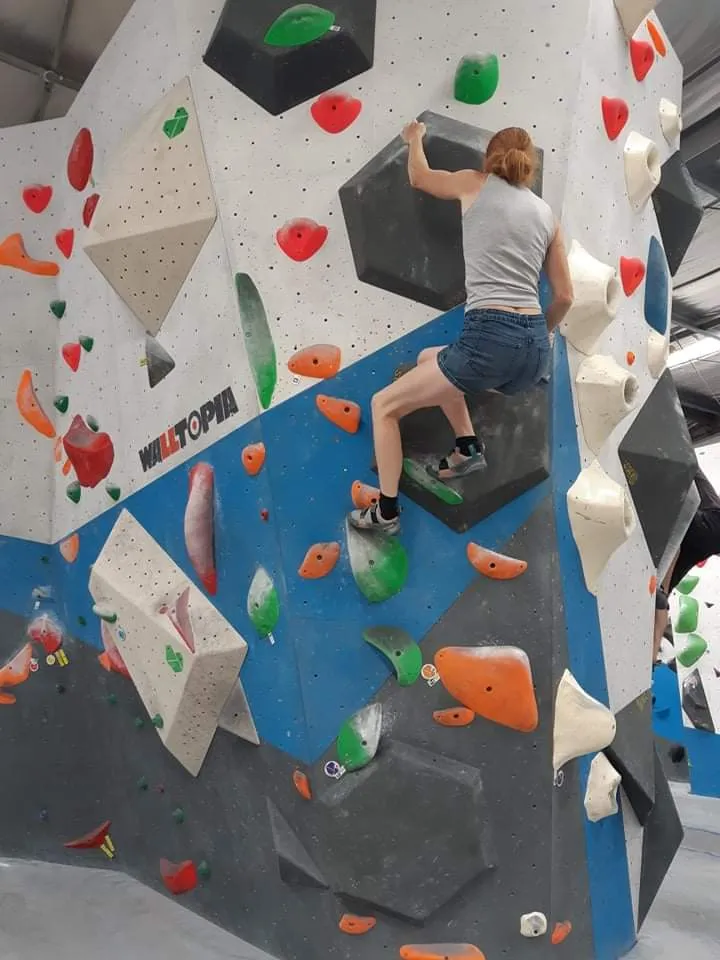
Then on the same section of wall comes a demonstration of a toe hook for a later climb. This was a climb where I would barndoor off once I matched my hands on that hold if I didn't get my toe hooked onto the hold around the corner first. I've seen much stronger people do it without the toe hook, though.

I'll have to leave the knee bar demonstration for another time, if I can remember to get photos. I've never done a hand jam, which are rare on indoor climbs anyway, but as it sounds, you jam your hand in a gap to keep you on the wall while you make the next move. Gosh, the things we'll do for our sport...
